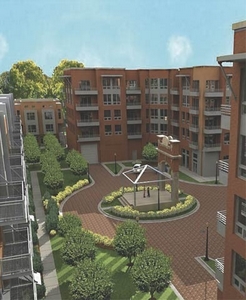Despite the common argument that affordable housing and inclusionary zoning reduces the value of properties neighboring affordable units, extensive empirical research and numerous studies have shown this belief is largely a myth. Studies have determined the impact of affordable housing on property values of neighboring market rate buildings and indicate nearly conclusively that affordable housing does not cause property values to decline. The California Housing Authority has conducted a series of studies on this relationship and found that 14 out of 15 cases of affordable housing developments resulted in either a slightly positive or negligible effect on neighboring property values. (McLean County Regional Planning Commission) One of the most thorough and cited studies on this relationship is published by the University of Wisconsin and shows that the only instance property value was affected adversely is when the affordable housing is located in a concentrated area of poverty. (Green, 2002) Evidence from this study has shown that when affordable rental housing is located in higher income neighborhoods, the impact is actually positive on property values.
A literature review of 17 studies shows that several factors influence the extent to which property values are lowered due to affordable housing, including design and management of affordable housing, compatibility between affordable housing and surrounding neighborhood, and concentration of affordable housing. (Nguyen, 2005) In the affluent Fairfax County, VA and Montgomery County, MD where inclusionary zoning has been enacted for several decades, a study tested whether subsidized housing causes the decline in value of non-subsidized housing. The study found proximity of subsidized housing made no difference in property values relative to the market as a whole. (Innovative Housing Institute) A local study of four very low-income family residential developments in suburban Chicago has also shown positive impacts on surrounding property values. (BPI, 2004) Overall, the studies on the effects affordable housing has on property values show a limited relationship, especially when affordable housing is dispersed.
When analyzing cost through a strict fiscal lens, municipal revenues and expenditures are central. Expenditures have been indirectly discussed in the greenfield and infill sections (if inclusionary zoning necessitates new infrastructure due to increased greenfield development or decreased infill development, expenditures will go up). Revenues, however, are less straightforward and more controversial. Many critics of inclusionary zoning claim that compulsory "affordable" developments hinder or diminish the value of neighboring market-rate properties. They further argue that these lesser property values weaken the tax base and create less solvent municipal governments. (Powell and Stringham) As previously discussed, the contentiousness of these claims has prompted ample research, the vast majority of which found no negative correlation between affordable housing developments and adjacent property values (Innovative Housing Institute; Pollakowski et al), nor a marked difference in municipal revenue due to inclusionary zoning policies or mixed-income development. (Nakajima et al)
Inclusionary zoning also impacts more general economic factors. For instance, the County Council of Montgomery County, Maryland found that their lack of affordable housing caused longer commute times for low-income residents who could not afford to live near their jobs. This in turn led to greater personnel turnover in local businesses, industries and public agencies, which hurt the local economy and placed an undue financial burden on the taxpayers of the county. (Burchell et al) As previously stated, Montgomery County was one of the first places in the country to administer an inclusionary zoning policy.
Another contentious issue of IZ centers on the question of who is actually subsidizing the units. Some state that IZ is an unfair tax on developers (Ellickson) while others argue that the real cost is born by landowners, who face decreased bids on their land, and homebuyers (Burchell et al), who face increased housing prices to help off-set the profits lost by selling the additional units at an affordable rate. However according to a recent study by Business and Professional People for the Public Interest (BPI), "Because most inclusionary housing programs contain a unit ‘threshold' of 5, 10, or even 50 units, the incidence of the program would be born by landowners of vacant land of significant size, not single-family homeowners largely dependant upon the amount of equity in their homes for livelihood and retirement… Furthermore, a moderate reduction in land costs is precisely what is needed to help improve affordability and enable developers to produce affordable homes in a rapidly escalating real estate environment." (Brunick)
|
Our research indicates that affordable housing has little effect on nearby land values. Have you seen evidence, either in studies or through your experience, of the effect of affordable housing on the value of nearby properties? Do you know of local case studies or anecdotes on this topic? |
